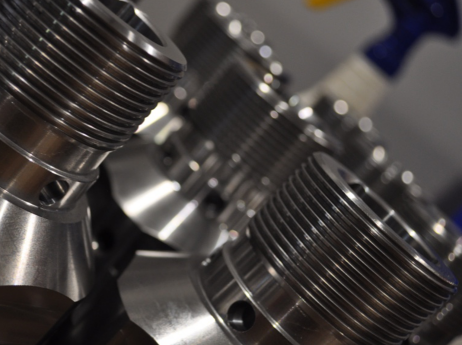WHAT ARE WIRELINE RUNNING & PULLING TOOLS?
2nd June 2021
Fish Necks or Fishing Necks can be found on almost every manufactured slickline tool in every slickline tool package worldwide and whether you are running to set tools into the well or retrieving a downhole flow control device, a Pulling Tool is always used to engage the fish neck of the tool to make this happen. The function of the device, well geometry constraints or design constraints will determine both the size of the fishing neck and whether an internal or external fish neck is appropriate.
External fish necks are incorporated predominantly on toolstring components, on Rope Socket’s, Stem, Power Jars, etc and generally utilised when attempting to achieve a slimmer design profile whilst external fish necks are adopted to aide downhole engagement or to open up an internal diameter to allow flow or injection through the device from or into the reservoir.
What is the most used wireline pulling tool?
The GS Type Pulling Tool is by far the most universally used internal fishing neck recovery tool, mainly due to the corresponding internal fish neck design being used for downhole devices by many manufacturers but also due to the simple design and reliability shown over many years of wireline service.
There are more options for external fish neck recovery tools which are related to completion design restrictions and also strength and reliability reasons. An external fish neck pulling tool is rarely stronger when compared to its internal counterpart due to available wall thicknesses so with observed failures, comes more engineered alternatives.
Wireline pulling tool technology
Pulling tool technology has remained largely unchanged for over 50 years, whilst Slickline wire, toolstring and winch units have made significant technological advances. As modern wire is now 3-4 times stronger, power jars are quickly becoming a must have for Slickline toolstrings.
The increased impact pushes the standard and old fashioned pulling tools beyond their original design limits, resulting in damaged tools, lost components and costly fishing operations.
Advanced slickline pulling tools
LiMAR have developed a range of Pulling Tools to keep up with the modern advancements found in other aspects of tool design. In all our Pulling Tools, we have engineered safe and efficient alignment features for re-pinning, strengthening efficiencies in Housing and Collet / Dog profiles, providing flats to make disassembly easier whilst increasing tool longevity and positive disengagement mechanisms to remove the Pulling Tools from surface without compromising the strength of the Pulling Tool Housing or Skirt.
The LiMAR Uni-Tool®, SD & SU Pulling Tools are all designed to accept the same interchangeable LiMAR Bell Guides which are uniquely connected to the Pulling Tool assembly without the need for weakening the pulling tool due to threading the housing. Alternatively, the LiMAR pulling tool range can be housed and deployed within the Universal Bell Guide which can be shortened or lengthened to accommodate any nominal Pulling Tool from 1-1/4” up to 3”.
The LiMAR Kickover Tool range including the Merla, OK & OM Type KOT’s have been optimised and modernised throughout with more user friendly features, weld-free precision machined components and improved surface treatment processes.
Tailor made wireline solutions
LiMAR offer bespoke solutions and we have the field experience and in-house expertise to configure to your specification and the machining capability cover any well type, from the most intricate micro sizes right up to the largest ODs. Contact our experienced team to discuss your operational needs today.

